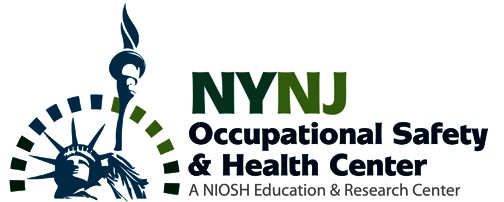Today, Ted Harrington from the USCG
Division Office in Boston, met us to provide an overview of fishing safety
issues. He provided real life scenarios of what type of decision-making needs
to occur when something goes wrong on a fishing vessel. The three things he
stressed are: 1. Have the necessary equipment; 2. The equipment is capable of
being used; and 3. Fishermen know how to use the equipment. He showed us several videos that showed that
equipment was available and the fishermen knew how to use it, but it not
capable of being used.
After that, Rodney Avila took us to the
docks in New Bedford to show us several types of fishing vessels. We went on
one of the scallop boats that was being repaired, and saw how the workers would
work on the boat.
It was a great experience to see the
dangers of fishing safety, and to learn the advancements in the past 8 years in
training fishermen in safety practices. Through these training programs it is
hoped that the accident and fatality rates continue to drop.
A great big THANKS to Ted and Rodney!
After arriving in Portland, the participants presented their site overview for Bath Iron Works and Sappi Paper. Then everyone was on their own for dinner and more. Guess who was at Karaoke?








4 comments:
Special thanks to Ted Harrington and Rodney Avila for their great insights and experience in fishing safety. Both presentations complemented each other well. It was great to hear that the coast guard authorities and the fishermen try to help each other to keep everyone out at sea safe. Also hearing that Rodney shares his fishing safety training with others at different fishing ports around the country was also great and beneficial to the fishing industry. The biggest thing I learned was that its not the event that kills fishermen but it is the reaction of one that will result in a favorable or non-favorable outcome. I am glad to see the fishing industry in progressing and hope for more progress in the future.
Being on a shio is the best way to understand the hazards itself. The fishing industry is associated with the most casualties, however, the safety hazards are plenty. As Industrial Hygenists, we would liek to implement as many engineering controls as we possiblty can, however, Ted's 3 points, having the technology/equipment, knowing how to use it, and is the equipmemnt capable of being used, is something that we can definitely take away from this trip. There isn't one factor, but many factors that we must account for in hazard prevention.
Also, being on the boat, I was able to see somewhat of the amount of noise and vibration that is experiences by the people who work on these boats.
If any of my ergonomic colleagues are interested, here's a video on how to shuck a scallops.
http://www.youtube.com/watch?v=384O3bwlVdQ
a bit slower...
http://www.youtube.com/watch?v=TSzUyTbWWPY
The presentation that preceeded the visit was great and it really helped to picture the hazards of fishing. I was actually really surprised that many of the fishermen don't know how to swim and it is not a requirement to be in the job. It became clear that emergency training is very important and during the visit our guide emphasized in many safety procedures that are part of the fishermen routine.
Post a Comment